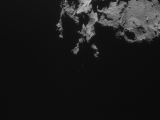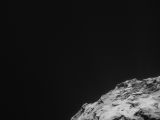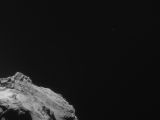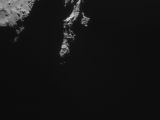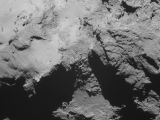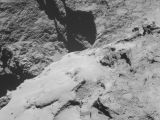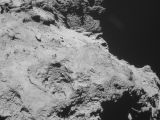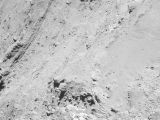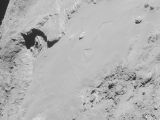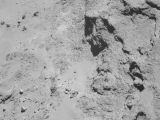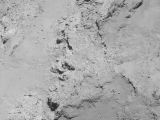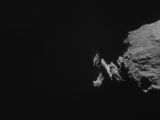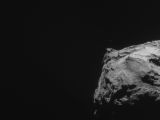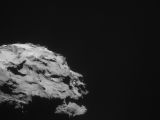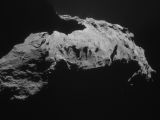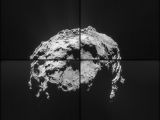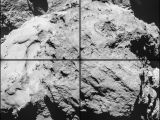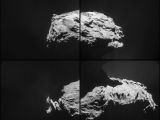In early August 2014, the European Space Agency's Rosetta spacecraft successfully placed itself in Comet 67P/Churyumov-Gerasimenko's orbit and officially became the first probe ever to join such a celestial body on its journey through space.
It's been several months since this landmark, but the spacecraft's adventure is far from over. In fact, it was this past weekend that Rosetta ventured freakishly close to Comet 67P/Churyumov-Gerasimenko and obtained a heck lot of super sharp close-ups of its surface.
These latest space images beamed back to Earth by the Rosetta spacecraft are available in the gallery below. Just to put things into perspective, it must be said that the probe and its target are now well over 490 million kilometers (over 300 million miles) from us.
That's right, these downright stunning pictures of barren, rocky landscapes that the European Space Agency released just yesterday, February 16, were delivered to us from a distance greater than three times the one between Earth and the Sun. Pretty cool, right?
How Rosetta obtained the images
On Saturday, February 14, the Rosetta spacecraft came within just 6 kilometers (about 4 miles) of the surface of Comet 67P/Churyumov-Gerasimenko. The probe made its closest approach at 12:41 UT, when it flew over the Imhotep region on the comet's large lobe.
During this flyby, the spacecraft imaged the celestial body's surface in stunning detail. Thus, the pictures it sent back to Earth once this mission was over show barren landscapes and dozens of boulders, some of them freakishly huge.
As explained by scientists, the reason Rosetta managed to obtain such sharp images is that, at the time it approached Comet 67P/Churyumov-Gerasimenko and flew over it stunningly close to its surface, the Sun was positioned right behind it.
“During the flyby, the spacecraft passed through ‘zero phase’ angle - i.e. with the Sun exactly behind the spacecraft - offering extremely good illumination conditions,” astronomers with the European Space Agency detail in a statement.
Apart from allowing the probe to study the comet's surface and snap pictures of it, such approaches are a good opportunity for the Rosetta spacecraft to analyze the chemical makeup of the atmosphere surrounding this celestial body.
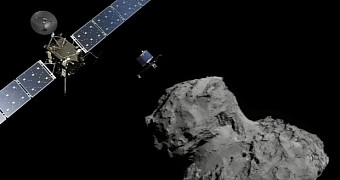
 14 DAY TRIAL //
14 DAY TRIAL // 
